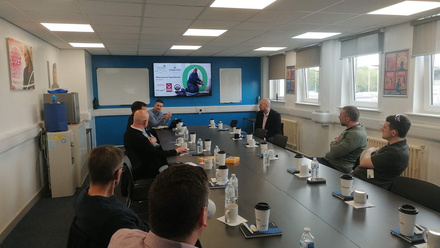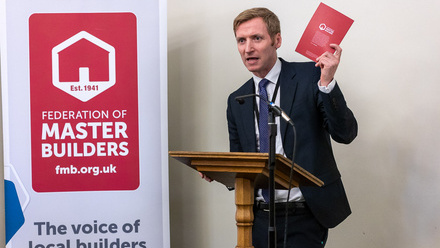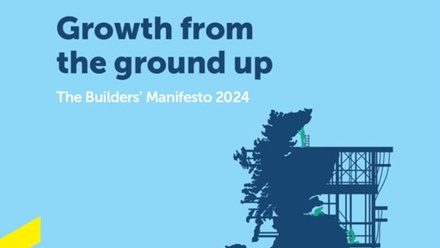The FMB partnered with well-known think tank IPPR, to capture what the benefits of retrofit could be. We know retrofit would be a huge boost for builders, it creates jobs and local growth, but what does that actually look like? We explore that here.
The short version
Why it matters: UK homeowners are facing a crippling energy crisis. This, coupled with the Government’s aim of meeting net zero carbon emissions by 2050, mean that we need to increase the pace of retrofitting energy efficiency measures in the UK homes. The report by IPPR in conjunction with the FMB sets out a clear path for how this can be achieved.
- Retrofit enables households to move away from gas powered energy, protecting homeowners from future price uncertainty.
- Upskilling in retrofit boots jobs in the small and medium sized (SME) construction sector.
- This benefits local economies and can be an important part of levelling up policy.
What we found: The report identified specific UK constituencies where a clear retrofit strategy would have the biggest positive impact. It also sets out what needs to be done to meet this in time for the 2050 deadline. It concludes that:
- Retrofit is a vital part in levelling up policy and retrofit will particularly contribute to regions that need a boost to their economy in northern and coastal regions.
- To address the skills shortage in retrofit, a national programme investing in local retrofit training is needed with investment in skills academies and on-site training.
- An awareness campaign working alongside household grants and incentives for homeowners are needed to increase take-up.
The detail: What’s retrofit?
Let’s remind ourselves what retrofit is, it’s a term that is increasingly used and has different meanings depending on who’s saying it. What we mean by it is improving the energy efficiency of a building, particularly domestic homes. Most homes in the UK are old. The country actually has the oldest building stock in Europe. So, they weren’t built with modern methods helping to keep the interiors cosy and therefore leak warm air. This means that heating has to be kept on longer or at higher temperatures to feel comfortable, which given the cost of energy, is not something householders want to be doing.
The big picture
Bigger issues are also at play, not only has the war in Ukraine driven up the cost of building materials, but it has also increased energy prices. This has meant Governments, including here in the UK, have started to look very closely at where their energy is coming from to ensure we can keep homes warm and the lights on. This means moves to drive down energy use and move away from gas heating have become a hot topic. Although politically it’s become a tricky issue. In any case, much, much more needs to be done. We advocate for a National Retrofit Strategy, to ensure all homes are retrofitted. This will drive down energy use, ensuring the UK’s energy supplies are safer from outside influence. But vitally to us all, it lowers bills and keeps them warm.
What does this all mean?
So, the big picture has been set out, but what does this mean for FMB members? Well, work, jobs and skills. Three of the most important elements to our members. This is why we’re so keen to see something happen. If we upgraded the nations homes, it would create a pipeline of work for members for decades to come and ensure future proofed skills.
The IPPR report we partnered on, clearly shows that jobs would be created nationwide, but mostly in areas that need a boost to their economies. They would mean more people could train, work and stay local – locking in jobs, skills and money to local communities. Seats in the north of England and coastal areas, would see around 14% of all jobs directly related to retrofit. This means businesses can grow, school leavers can find construction jobs and local economies would see investment.
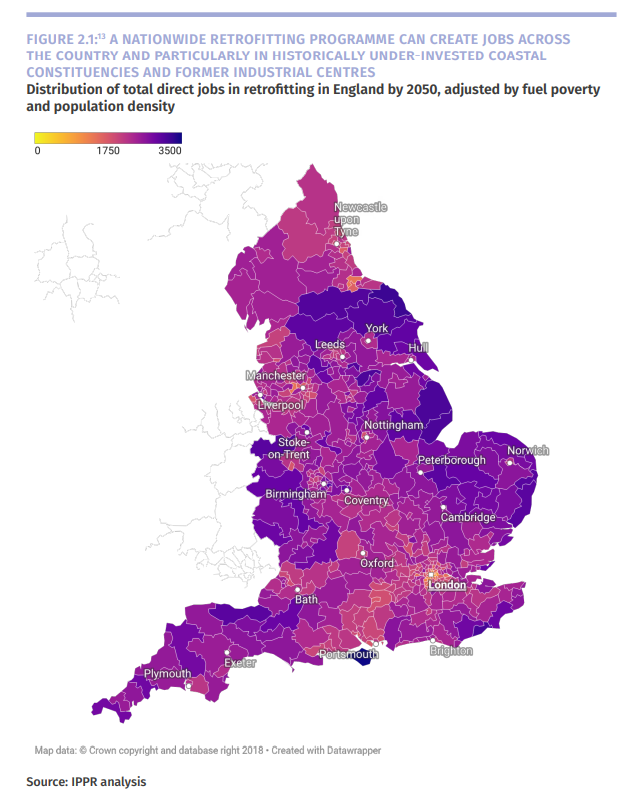
So, what’s going to happen?
Ultimately though, while there needs to be political will to deliver this, there also needs to be the skills in place to make it happen. And right now, there are not enough skilled workers in the industry and the numbers joining don’t match those leaving.
So, what do we need? Firstly, funds for training in green skills would kick start the process. Secondly, specialised organisations called ‘skills academies’ to make sure quality training in the right places is being delivered. Lastly, more on the site training opportunities, using local colleges, to make sure builders start the job with the right on site skills.
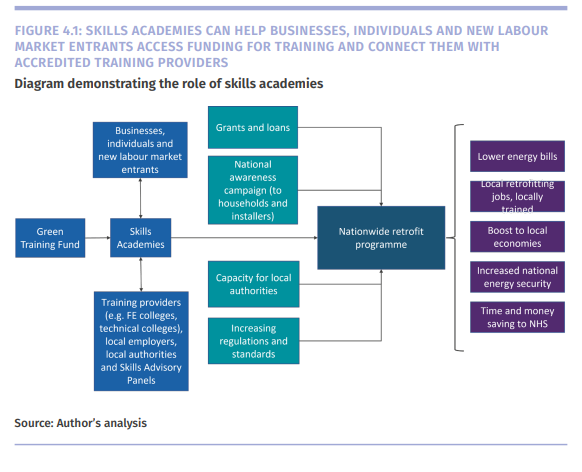
Download the report
Find out more and download the report to read in full.




